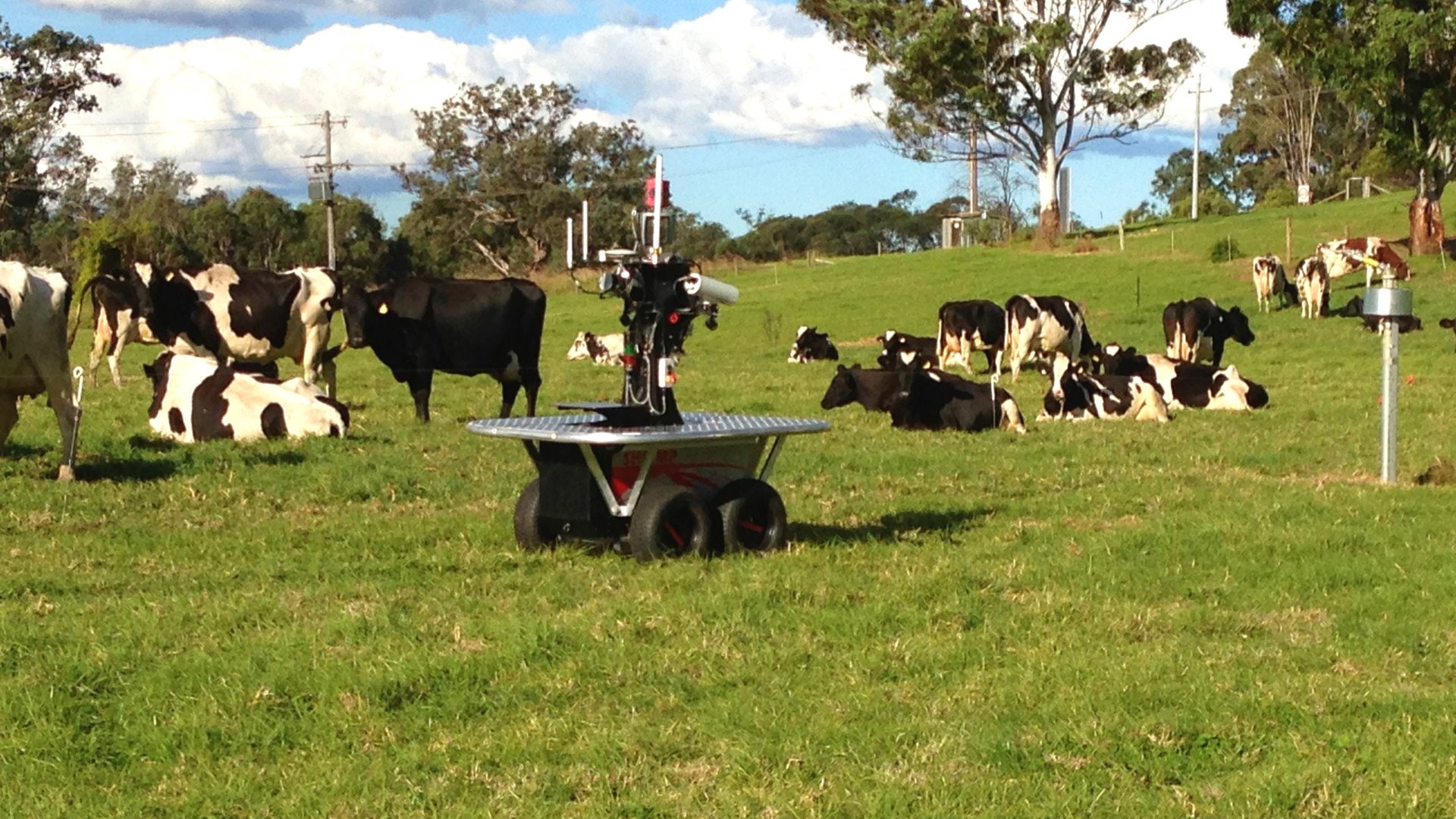Why farmers and cows prefer robots to dogs
Robots are already doing everything from making coffee to high-frequency trading. Now they’re after dogs’ jobs as well. A prototype robot that herds cows is being tested by researchers at the University of Sydney, and early results show that the four-wheeled fellow does a better job than his four-legged competition.


Robots are already doing everything from making coffee to high-frequency trading. Now they’re after dogs’ jobs as well. A prototype robot that herds cows is being tested by researchers at the University of Sydney, and early results show that the four-wheeled fellow does a better job than his four-legged competition.
Originally developed to monitor fruit in orchards, the robot was modified slightly so it could be put in a paddock with cows to test robot-bovine interactions, says University of Sydney associate professor Kendra Kerrisk.
The results were encouraging. Cows readily accepted the robot among them. Unlike impatient human or canine herders, the robot was able to move at the stately pace of a cow, which kept the livestock calm during herding. That reduced lameness, allowing cows to live longer and more productive lives. With widespread adoption, it might reduce human deaths from accidents on quad bikes, a popular way to fetch cows on large estates.
The University of Sydney research team showed the rover at the Dairy Research Foundation’s symposium in July, then received an undisclosed amount of funds for a purpose-built prototype. The improved robot will need to be able to tell cows from inanimate objects like fences, identify cows that are lying down and unable to stand (then alert the farmer), and figure out which cows are moving purposefully in the right direction versus just wandering around. It will be built with sensors, cameras and LiDAR, a radar-like technology that uses lasers rather than radio signals.
The robot that exists right now functions as little more than a very expensive dog, without the “man’s best friend” part. But the prototype that’s coming will be able to do much more, and a future version could be even more advanced, say Kerrisk. There is no reason why a cow-herding robot, already out in the field all day, could not collect data on the quality of the soil, check water troughs and detect damage to the fences.
Robots are already used to milk cows. The herding robot could improve things there as well, bringing the cows to the milking shed one by one, instead of being herded by a human all together.
What about those herding humans, you might ask? Well, Australia is in the midst of a severe shortage of farm labor, and has been importing workers for farms. A cow-herding robot could allow the farmer to move skilled employees to another role. As for the out-of-work dog, it remains better suited to cuddling at night than its replacement.